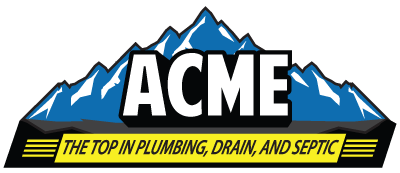Stay Dry: Early Detection Techniques for Identifying and Addressing Hidden Water Leaks
Water leaks can cause significant damage to your home if left undetected, leading to costly repairs and potential health hazards like mold growth. Unfortunately, not all leaks are visible, and many can remain hidden behind walls, under floors, or in ceilings. Early detection of hidden water leaks is crucial to prevent damage and maintain the integrity of your home. In this blog post, we’ll explore the most effective techniques for identifying and addressing hidden water leaks before they become a major problem.
1. Monitor Your Water Bill
One of the easiest ways to detect a hidden water leak is by keeping a close eye on your water bill. If you notice a sudden, unexplained increase in your bill without a corresponding increase in water usage, it’s a red flag that you may have a hidden leak. A small, slow leak can waste hundreds of gallons of water over time, significantly increasing your bill. Comparing your monthly usage to previous months can help you identify any inconsistencies.
2. Check Your Water Meter
A water meter test is another simple way to detect leaks. Here’s how to do it:
Ensure all water-using appliances (such as faucets, toilets, and washing machines) are turned off.
Record the reading on your water meter.
Wait for at least one hour without using any water.
Recheck the meter reading.
If the reading has changed during the time when no water was being used, you likely have a hidden leak somewhere in your plumbing system. This method is especially effective for detecting small or slow leaks.
3. Inspect for Mold or Mildew
Mold and mildew thrive in damp environments, making their presence an indication of excess moisture or hidden water leaks. If you notice mold or mildew forming in areas that shouldn’t be wet, such as walls, ceilings, or floors, it’s important to investigate further. Hidden leaks behind walls or under floors can create the perfect environment for mold to grow. Even a small leak can produce enough moisture to encourage mold development, which poses health risks, especially to individuals with allergies or respiratory issues.
4. Look for Water Stains or Discoloration
Water stains on walls, ceilings, or floors are often a telltale sign of a hidden leak. Discoloration, typically yellow or brown, indicates that water is seeping into areas where it shouldn’t be. In ceilings, this may point to a leak in your roof or plumbing running through the upper levels of your home. On walls, it could mean there’s a leaking pipe behind the surface. Once you notice any discoloration, it’s important to act quickly and call a plumber to assess the situation.
5. Test for Unusual Sounds
Even hidden water leaks can sometimes make noise. If you hear dripping, hissing, or the sound of running water even when all faucets and appliances are turned off, it could be a sign of a hidden leak. Pay close attention to the sounds coming from your walls, under your floors, or near your plumbing fixtures. These noises may indicate water escaping from a pipe, especially if the sound persists over time.
6. Examine Your Lawn or Yard
If the leak is coming from an underground pipe, it may show up in your yard or lawn. Soggy patches of grass, unexpected wet spots, or lush, greener areas can indicate that a pipe under the ground is leaking. This can occur in water supply lines or irrigation systems. Additionally, if you notice sinkholes or erosion around your yard, it’s a sign of a potentially serious underground leak that should be addressed immediately.
7. Check Water Pressure
If you’re experiencing reduced water pressure in your faucets or shower, it could be an indication of a leak somewhere in your system. Low water pressure often results from water escaping from the pipes, leaving less water available for regular household use. If the drop in pressure is isolated to a particular area of your home, it may suggest a localized leak. However, if the pressure drop is widespread, it may indicate a larger issue, such as a leak in the main water line.
Addressing Hidden Water Leaks
Once you’ve identified a hidden leak, it’s crucial to address it promptly. Depending on the severity and location of the leak, you may be able to make minor repairs yourself, such as replacing worn-out washers or tightening pipe fittings. However, for more complex leaks, it’s best to call a professional plumbing service. Delaying repairs can lead to extensive water damage, structural issues, and costly repairs down the road.
Early detection of hidden water leaks can save you from major headaches and expenses. By using these techniques—monitoring your water bill, checking your meter, and being alert for signs like mold, discoloration, and reduced water pressure—you can identify and address hidden leaks before they cause serious damage. If you suspect a hidden leak, act quickly and consider seeking the help of a professional plumber to prevent further problems and protect your home.
